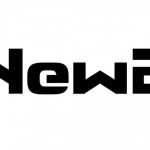Amobee、モバイルRTBの成長性と課題について
Last March, Singapore-based telecom SingTel acquired mobile ad platform Amobee for $321 million. Since then Amobee has been developing its mobile real-time bidding capabilities as a way to broaden it’s service offerings across Asia and Latin America. We spoke with Trevor Healy, Amobee’s CEO, about how the Redwood City, CA-based company has updated its focus.
AdExchanger: What has been happening at Amobee since last spring’s acquisition by SingTel?
TREVOR HEALY: We released a new product for advertisers to create interactive 3-D ads, called “Pulse Create.” We’ve also implemented our proxy across Asia in the SingTel operators. We just launched a mobile advertising platform in Argentina this last week—so lots going on, and SingTel is making a lot of progress.
Advertisers are starting to explore mobile RTB. Do you consider yourselves a player in that arena, or is it still too nascent?
Yes, we do see real-time bidding starting to come into the market now. There’s traditional evolution of an advertising market that tends to take place. First, you tend to get technology established, followed by advertisers and publishers. The mobile networks and various sorts of optimizers spring up. That lays the groundwork for putting good targeting and good data in place.
After having established targeting and data systems, you start to see the real-time bidding, because it can be scaled. For us, we’ve just built RTB into our platforms, and I think you’ll start to see it grow in the coming year.
How do you advise clients in terms of how to approach mobile RTB? Do you see any particular categories of advertisers or campaigns where mobile RTB creates benefits?
To start, mobile RTB is not for everybody. It’s a mistake to think otherwise. It’s generally suited to companies who have a time-based offering or a time-based product. For example, weather is a good case-in-point. Should the weather change in the Sierras in northern California and the first snow falls, it’s probably a good time for Rossignol or Saloman to advertise their new ski products on a real-time basis and buy the mobile ads anywhere from San Francisco to Truckee in northern California, where people are more likely to ski and invite people.
In summertime, you could take a very good sample of pollen counts during the spring going into early summer. Companies that market products to alleviate allergies need to buy ads in areas where the pollen count might be high enough for it to be effective.
Amobee has sometimes been described as a mobile ad network – erroneously in the company’s view. Is the mobile ad network model irrelevant in general, or just to Amobee?
It’s not that it’s irrelevant in general. It’s very relevant as a model.
If I have $100,000 worth of inventory that I want to sell during the year, and I’m a small mobile ad publisher, then going to a mobile network is a good deal for me. If I open up a new store in my town, and I want to advertise in that geographic area and spend $15,000 on a mobile-ad campaign, a mobile ad network is very appropriate for me.
But as you go into scale and you go into very large publishers and very large advertisers, then what you’ll find is that mobile ad networks decrease in relevance.
Those large advertisers and publishers tend to need their own platforms, and that’s where we come in. However, we have only good things to say about mobile advertising networks. A lot of them are our partners, and they provide a very valid role. And they do get a bad rap in the market which is not deserved. Like mobile RTB, it’s right for some, not right for others.
Does it matter to companies like yours that there’s perhaps $35 billion spent in the general digital ad marketplace and roughly $2 billion spent in mobile. And should it matter to advertisers?
For us, it doesn’t really matter. We are categorized as a mobile advertising company, but a lot of our technologies have been used across other screens — video, TV, tablets. For us, the relevant issues with regard to mobile tend to revolve around cross-platform. “Where does mobile end and online begin?” Getting the best measurement for mobile traffic and engagement, getting better site categorization between advertisers and publishers are much more on our minds than the size of the market.
What about the tension between the mobile web and mobile app economies? Do you consider those areas to be seamless or are they still far apart, from an advertising perspective?
I would say ads across apps and the mobile web are largely seamless now. The days of having to have different types of ad units and different approaches for those formats are mostly gone.
A lot of mobile targeting is still predicated on location. That’s natural enough, but not all advertising is local, certainly. How do you target users?
I think we can target more on mobile than any other device, because by the nature of the name…you take it everywhere you go. It’s the only billboard we carry around in our pocket. Obviously, location is the most obvious one. It’s very important, because you can serve pertinent to geography, but when you have carrier data, you know who the person is, what device they’re carrying.
Does the device that they carry determine a larger demographic profile and the person’s socioeconomic position? I would say we’re looking at not just location, but demographic and behavioral targeting. We’re starting to get a lot more clever on mobile by monitoring the round trip from when somebody saw an ad all the way through to when they might have downloaded an app and then used that app in particular, to derive coupons and then use those coupons.
E-commerce through apps has also become more common. Is Amobee focusing any efforts on retargeting in mobile?
We do work with e-commerce providers. For us, it’s all about looking at the direct response arc of a campaign and trying to shorten the time-frame from ad to buy, and from ad to purchase. Sometimes, in the advertising world, we fall in love with advertising and forget that the prime purpose is to drive the economic engine to the advertisers. In a lot of our advertising, we have direct response and purchase events embedded, so that the advertiser, if they’re an online retailer or offline or something in between, can actually guess very accurately more of the direct purchase events. We’re building that in and we see more people doing that everyday.
We’re currently plowing through Q3 earnings. What are you seeing in the middle of Q4?
The focus is about keeping up with the demands of the fourth quarter. It tends to be the busiest quarter of the year for technology-based advertising. People are spending; we start seeing the consumer electronics companies come out in force for the holiday season. And we are starting to see people ramp up their campaigns, this year in a way that is increasing over last year. It will probably be all hands on deck between now and the holiday season to deliver on advertising campaigns.
Then in January and February, you’ll start to see us focus on more international building again, primarily with Asia. And that’s not because our new parent is Asian, but it’s really because that’s where a lot of advertisers are putting down online dollars. GDP growth across Asia is outpacing other countries around the world, and in that market consumer package goods companies are putting dollars there to a higher degree. As a result of all that’s going on there, our platform is in high demand in those markets.











